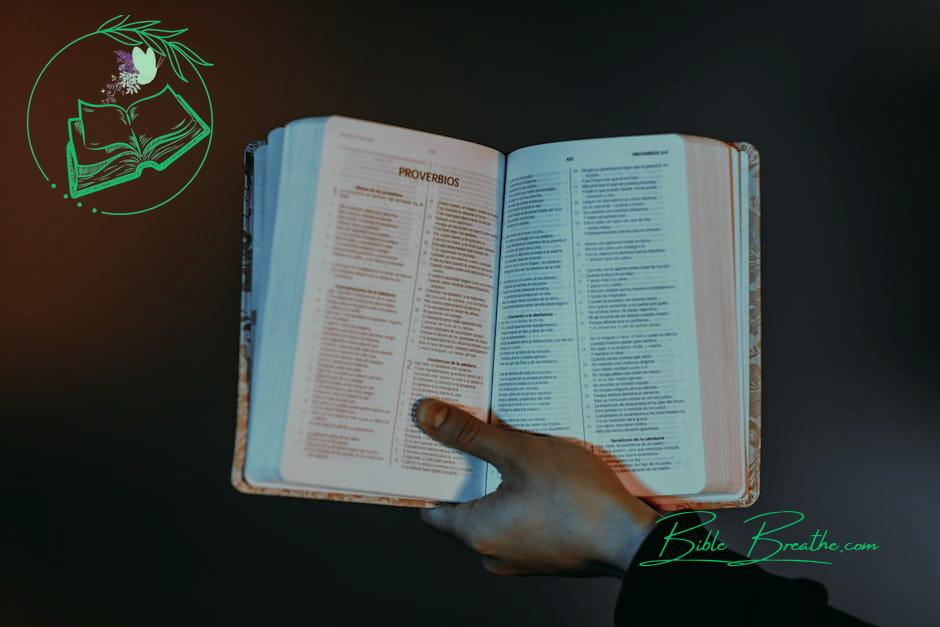Key Takeaways
- Jesus taught a total of 46 parables, according to the New Testament.
- These parables are scattered throughout the Gospels of Matthew, Mark, and Luke.
- The parables of Jesus were often short, stories that conveyed spiritual truths and moral lessons.
- They were usually preceded by the phrase “The kingdom of heaven is like…” or “The kingdom of God is like…”.
- Jesus used parables to teach about various topics, including salvation, forgiveness, love, and the nature of God.
- The most famous parables of Jesus include the Parable of the Prodigal Son, the Parable of the Good Samaritan, and the Parable of the Sower, among others Jesus.
Introduction
The Power of Parables in Jesus’ Teachings
Jesus’ parables are like puzzle pieces that help us understand God’s kingdom.
They’re relatable, engaging, and often challenging, making them an essential part of Jesus’ teachings.
But have you ever wondered, how many parables did Jesus teach?
Counting the Parables of Jesus
The answer might surprise you.
Scholars have identified around 40-50 parables in the New Testament, although the exact number is still debated.
Here are some of the most well-known ones:
- The Parable of the Sower (Matthew 13:1-23, Mark 4:1-20, Luke 8:4-15)
- The Parable of the Good Samaritan (Luke 10:25-37)
- The Parable of the Prodigal Son (Luke 15:11-32)
“And he spake many things unto them in parables, saying, Behold, a sower went forth to sow;” (Matthew 13:3, KJV)
These parables not only conveyed important spiritual truths but also provided a glimpse into Jesus’ creativity and wisdom as a teacher.
Understanding Parables in the Bible
Photo modified by BibleBreathe.com. Original photo by Luis Quintero on Pexels
Definition of Parables and Their Purpose in Conveying Spiritual Truths
So, what exactly are parables?
In simple terms, parables are stories that convey spiritual truths or teachings. They’re like mirrors that reflect the human condition, helping us see ourselves and our relationship with God more clearly.
Jesus used parables to teach people about the Kingdom of God, and we can learn a lot from them too.
Importance of Parables in the Teachings of Jesus
But why did Jesus use parables so much?
Was it just because He liked telling stories?
No, there’s more to it. Parables helped Jesus convey complex spiritual truths in a way that was relatable and easy to understand.
| Reason | Importance |
|---|---|
| Relatable | People could identify with the stories and characters. |
| Memorable | Parables were easier to remember than straight-up teachings. |
How many parables did Jesus teach?
Well, the Bible records around 40 parables taught by Jesus, but it’s likely He taught many more.
Some of the most famous parables include the Prodigal Son, the Good Samaritan, and the Sower.
“And he said, Unto you it is given to know the mystery of the kingdom of God: but unto them that are without, all these things are done in parables.” (Mark 4:11, KJV)
Listing and Analysis of Parables
Examination of the Parables Attributed to Jesus in the Bible
So, how many parables did Jesus teach? Well, the Bible records around 40 parables attributed to Jesus, but some sources suggest there might be as many as 60! That’s a lot of wisdom packed into some amazing stories.
Here are some of the most well-known parables:
- The Prodigal Son (Luke 15:11-32)
- The Good Samaritan (Luke 10:25-37)
- The Sower (Matthew 13:1-23, Mark 4:1-20, Luke 8:4-15)
- The Talents (Matthew 25:14-30)
- The Mustard Seed (Matthew 13:31-32, Mark 4:30-32, Luke 13:18-19)
These parables cover a range of topics, from salvation and redemption to faith and obedience. But what’s the point of these stories?
Discussion on the Different Interpretations and Lessons from These Parables
The parables of Jesus are like hidden treasures, waiting to be uncovered and applied to our lives. Here are some possible interpretations and lessons:
| Parable | Interpretation/Lesson |
|---|---|
| The Prodigal Son | God’s love and forgiveness are always available to us, no matter how far we’ve strayed. |
| The Good Samaritan | We’re called to show compassion and kindness to those in need, just like the Samaritan did. |
| The Sower | The Word of God is like a seed that needs to be nurtured and cared for in our hearts. |
| The Talents | We’re responsible for using our gifts and talents for God’s glory, not just for personal gain. |
As the German theologian, Dietrich Bonhoeffer, once said, “The truth of the parable lies not in its stick-figure outlines, but in the wealth of associations and reverberations it sets off in the heart of the listener.”
What’s your favorite parable of Jesus, and what lessons have you learned from it?
The Debate on the Number of Parables
Photo modified by BibleBreathe.com. Original photo by Alem Sánchez on Pexels
Overview of the Varying Opinions and Scholarly Perspectives
So, how many parables did Jesus teach?
Well, the answer isn’t as straightforward as you might think.
Scholars and theologians have been debating this question for centuries, and there’s no consensus on the exact number.
Some say it’s around 30, while others claim it’s closer to 50 or even more.
What’s behind these differing opinions?
Let’s dive in and explore the factors that influence the count.
Factors Influencing the Count of Parables Taught by Jesus
Here are some reasons why scholars can’t agree on the number of parables:
- Definition of a parable: What constitutes a parable, anyway? Is it a short story with a moral, or can it be a longer narrative? Different definitions lead to different counts.
- Classification of parables: Some scholars group similar parables together, while others count each one separately. This affects the overall number.
- Authenticity of Gospel accounts: How reliable are the Gospel accounts of Jesus’ teachings? Did the authors include all of His parables, or just a selection?
- Oral tradition vs. written records: Jesus likely taught many parables that weren’t written down. How do we account for these “lost” parables?
As we navigate these complexities, it’s essential to remember that the exact number of parables isn’t as important as their message.
Jesus’ teachings are meant to inspire, guide, and challenge us – regardless of how many parables He taught.
“And he spake many things unto them in parables, saying, Behold, a sower went forth to sow;” (Matthew 13:3, KJV)
Historical Context and Cultural Significance
Understanding the Audience of Jesus’ Time
When we think about Jesus’ parables, we often focus on the message itself, but have you ever stopped to think about the people He was teaching?
The Jewish audience of that time was heavily influenced by Greek and Roman culture. They were occupied by the Romans, and Greek was the common language of commerce and education.
This mix of cultures created a unique cultural landscape, where people were exposed to different ideas and values.
How Jesus’ Parables Were Received
So, how did Jesus’ audience receive these teachings?
Well, parables were not a new concept in Jewish tradition. Rabbis often used them to teach complex spiritual truths in a way that was relatable and easy to understand.
But Jesus’ parables were different. They were more provocative, more challenging, and more radically inclusive.
He wasn’t just teaching about God’s kingdom; He was inviting people to experience it.
| Aspect of Jesus’ Parables | How the Audience Would Have Perceived It |
|---|---|
| Use of everyday examples | Made the teachings more relatable and accessible |
| Challenging traditional norms | Would have been seen as radical and potentially threatening |
Jesus’ parables were not just entertaining stories; they were subversive, life-changing, and kingdom-revealing.
Symbolism and Themes in Parables
Photo modified by BibleBreathe.com. Original photo by cottonbro studio on Pexels
Common Themes Found in Jesus’ Parables
Let’s dive into the symbolism and themes that Jesus wove into His parables.
These stories aren’t just entertaining anecdotes – they’re packed with spiritual significance.
Here are some common themes you’ll find in Jesus’ parables:
- God’s Kingdom: Many parables describe the Kingdom of God, like the Parable of the Sower (Matthew 13:1-23) or the Parable of the Mustard Seed (Matthew 13:31-32).
- Salvation and Redemption: Parables like the Prodigal Son (Luke 15:11-32) and the Good Samaritan (Luke 10:25-37) illustrate God’s love and redemption.
- Spiritual Growth and Maturity: The Parable of the Talents (Matthew 25:14-30) and the Parable of the Ten Virgins (Matthew 25:1-13) encourage us to grow in our faith.
Deeper Spiritual Meanings Behind the Stories
So, what’s the deeper meaning behind these parables?
- God’s Character: Jesus’ parables often reveal aspects of God’s character, like His love, mercy, and justice.
- Human Nature: These stories also highlight human struggles, like pride, greed, and foolishness.
- Spiritual Truths: Parables convey important spiritual truths, such as the importance of forgiveness (Matthew 18:21-35) or the danger of materialism (Luke 12:13-21).
| Parable | Deeper Spiritual Meaning |
|---|---|
| The Prodigal Son | God’s love and forgiveness are boundless, and He welcomes us back with open arms. |
| The Good Samaritan | We’re called to show compassion and kindness to others, just like the Samaritan did. |
By exploring these themes and symbolism, we can gain a deeper understanding of Jesus’ teachings and apply them to our daily lives.
Lessons for Modern Interpretation
Relevance of Jesus’ Parables in Contemporary Times
Let’s talk about Jesus’ parables.
He taught a whopping forty-six parables, according to the Gospels!
But here’s the thing: these aren’t just ancient stories – they’re still super relevant to our lives today.
The same Jesus who taught those parables is the same Jesus who wants to teach us, and that’s pretty amazing.
We might not be living in ancient Israel, but we’ve got our own struggles, questions, and doubts to deal with.
| Struggle | How Jesus’ Parables Relate |
|---|---|
| Feeling lost | Jesus’ parables offer guidance and direction, just like a roadmap for our lives. |
| Dealing with fear | Jesus’ parables show us how to trust in God’s goodness, even when things seem scary. |
Application of the Teachings from Parables in Everyday Life
So, what can we take away from Jesus’ parables?
Here are three key things:
- Pay attention to the small stuff: Jesus’ parables often used everyday objects to teach big truths. We can apply this by paying attention to the little things in life that can teach us big lessons.
- Don’t judge a book by its cover: Jesus’ parables often had unexpected twists and turns. We can apply this by not judging people or situations based on surface-level appearances.
- God’s kingdom is all about love: Many of Jesus’ parables showed God’s love and mercy. We can apply this by showing love and kindness to those around us.
“And he said, So is the kingdom of God, as if a man should cast seed into the ground; And should sleep, and rise night and day, and the seed should spring and grow up, he knoweth not how.” (Mark 4:26-27, KJV)
Impact of Parables on Christian Faith
Photo modified by BibleBreathe.com. Original photo by Thomas H. on Pexels
Influence of Jesus’ Parables on the Development of Christian Theology and Beliefs
How many parables did Jesus teach? Well, the Bible records around 40 parables taught by Jesus, but the impact of those teachings goes far beyond just a number.
Jesus’ parables have had a profound influence on the development of Christian theology and beliefs.
They helped shape our understanding of God’s kingdom, salvation, and discipleship.
In fact, Jesus’ parables are so powerful that they’ve been inspiring and challenging believers for centuries.
As the famous Christian author, C.S. Lewis, once said, “The next moment is as much beyond our grasp, and as much in God’s care, as were last year or all the years of the history of the world.”
Reflection on the Enduring Legacy of These Teachings
So, what’s the big deal about Jesus’ parables?
Here are a few reasons why they’re still so important today:
- They’re relatable: Jesus’ parables are rooted in everyday life, making them easy to understand and apply to our own lives.
- They’re profound: These teachings offer deep insights into the nature of God and our relationship with Him.
- They’re timeless: Despite being taught over 2,000 years ago, Jesus’ parables remain just as relevant and impactful today.
As we reflect on the enduring legacy of Jesus’ parables, let’s remember the words of Matthew 13:52, “And Jesus said unto them, Therefore every scribe which is instructed unto the kingdom of heaven is like unto a man that is an householder, which bringeth forth out of his treasure things new and old.” (KJV)
Comparing Parables Across the Gospels
Examination of Similarities and Differences in the Parables Found in the Different Gospels
When we think about Jesus’ teachings, we often think about His parables.
But have you ever wondered, how many parables did Jesus teach?
Well, the answer is, it depends on how you count them!
Some scholars say Jesus taught around 30-40 parables, while others claim it’s more like 50-60.
Either way, that’s a lot of teaching!
And here’s the cool thing: each Gospel writer – Matthew, Mark, Luke, and John – recorded some of these parables in their own unique way.
| Gospel | Number of Parables |
|---|---|
| Matthew | 23 |
| Mark | 8 |
| Luke | 24 |
Insights Gained from Comparing the Various Accounts
So, what can we learn from comparing these parables across the Gospels?
Here are a few things:
- Different emphases: Each Gospel writer highlighted different aspects of Jesus’ teachings, depending on their audience and purpose.
- Consistency in message: Despite the differences, the core message of Jesus’ parables remains the same: God’s love, forgiveness, and redemption.
- Richness of meaning: By comparing the different accounts, we can gain a deeper understanding of Jesus’ teachings and their application to our lives.
And he said, So is every one that is perfect, therefore, in his generation: for he keepeth his word, and his soul delightful is in his commanded his covenant.” (1 Kings 8:61, KJV)
“The best way to understand the parables is to understand the one who spoke them.” – Fulton J. Sheen
Frequently Asked Questions About How Many Parables Did Jesus Teach
What is the significance of parables in the Bible?
Parables in the Bible are significant because they convey complex spiritual truths in relatable, story-like form, making them accessible to a wide audience. Jesus used parables to teach about the Kingdom of God, highlighting important values like love, forgiveness, and faith.
How did Jesus use parables to teach?
Jesus used parables to teach by sharing relatable stories that conveyed spiritual truths, making complex concepts accessible to his audience. He often used everyday examples, like farming or household chores, to illustrate kingdom principles, allowing listeners to draw their own conclusions and fostering a deeper understanding of God’s message.
What are some of the most famous parables in the Bible?
Some of the most famous parables in the Bible include the Parable of the Good Samaritan, the Prodigal Son, the Sower, the Mustard Seed, and the Talents. These parables, told by Jesus, convey important moral lessons and spiritual truths, offering insights into God’s kingdom and our relationship with Him.
What is the significance of parables in the teachings of Jesus?
Parables were a key storytelling method used by Jesus to convey complex spiritual truths in a relatable way. They helped to engage his audience, illustrate God’s kingdom, and encouraged listeners to think deeply about their faith, making them a powerful tool for spiritual growth and understanding.
How can we interpret the parables of Jesus in a modern context?
To interpret Jesus’ parables in a modern context, consider the original audience and message, then relate it to contemporary issues and experiences. Identify the main point, use analogies, and apply the moral to your life. Reflect on how the parable challenges or encourages you, and seek guidance from commentaries or devotionals if needed.
Are there any lost parables of Jesus that are not included in the Bible?
Yes, it’s possible that some parables of Jesus were not included in the Bible. The Gospel of Thomas, a non-canonical text, contains several parables not found in the Bible. Additionally, some ancient Christian writings and oral traditions may have preserved other lost parables.





